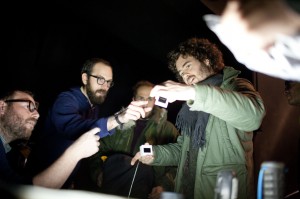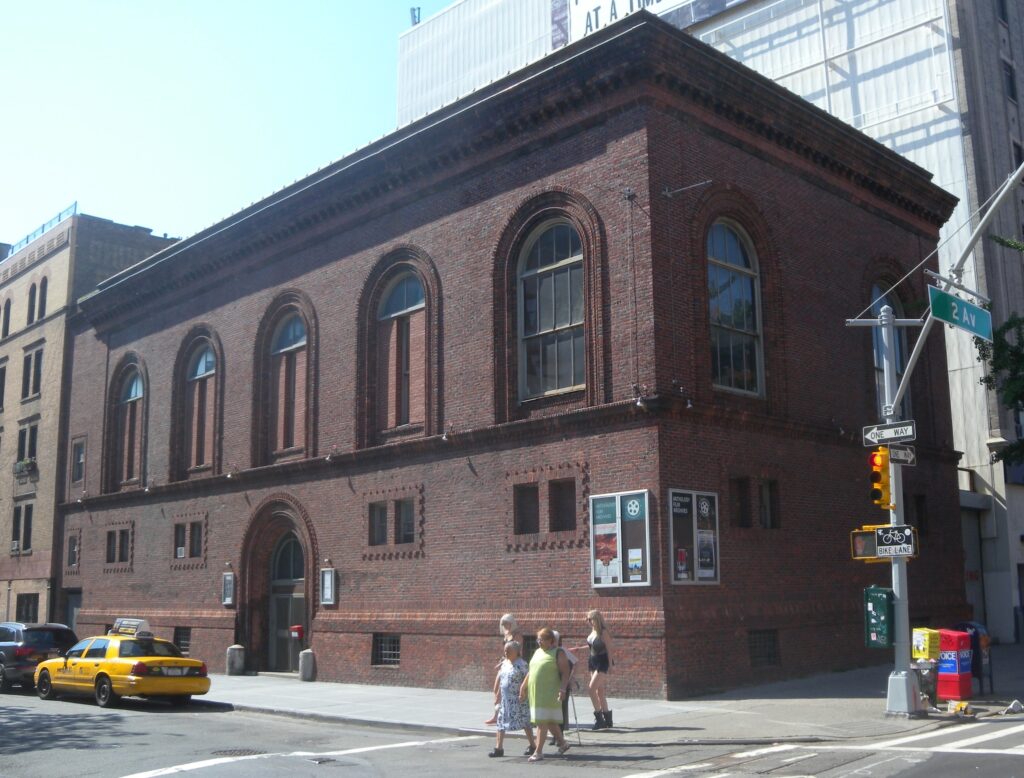Based in the East Village of Manhattan, the Anthology Film Archives has long held a place in the hearts of cinematically inclined artfolk. With holdings comprised primarily of avant-garde and experimental art film, Anthology has evolved from its original conception as an experimental museum of film to a well-regarded, more traditional archive, with weekly film screenings, a reference library, preservation activities and a healthy dose of community outreach.

I recently spoke with John Klacsmann, one of the professional film archivists at Anthology, about the background necessary to pursue a career in film archiving and the future of the field in the face of increasing/encroaching digitization.
One of the first questions that came to mind to ask Klacsmann was how he came about film archiving. As a current student in the Archives Specialization at the IU School of Library and Information Science, it seems as though the obvious route of getting a degree in archiving and then maybe a degree in film studies would not leave you very well prepared. For example, at SLIS there is only one class directly related to moving image preservation and regardless of how amazing a single semester is, it can’t set you up for a lifework in film.
Klacsmann backed up this original assumption when providing his educational and professional background. While he stressed the importance of archiving best practices: planning preservation paths, processing new materials and collections and the overall attention to detail and minutiae at hand in archival organization, Klacsmann was also very clear that the skills he thought most essential and, perhaps for analog fetishists, under-appreciated were computer science related. In fact, though Klacsmann says he knew he wanted a career in film archiving science he began his undergraduate career, he choose to get a bachelors in computer science and receive much of his hands-on film experience at the time through working in his university’s film and media archive.

Although he has worked on projects like a 35mm film preservation project for the Eastman House at Technicolor Hollywood and with a collection of historical Technicolor dye-transfer equipment, Klacsmann says the skills he gained in pursuit of his computer science degree (playing with databases, filesystems, and building servers and RAID arrays, etc.) have become increasingly valuable as film archiving, in his experience, moves away from storage possibilities for physical materials and towards a digital future.
Later in the interview, Klacsmann said that
These types of [computer] skills are becoming increasingly important within the archiving field as digital restoration techniques take over and digitization and seamless video access to collections are on everyone’s mind.
The focus on digital video access, which at first glance might seem out of line with the ideals of an art-for-art’s-sake archive of experimental film, seems to be a topic that Klacsmann is very excited about. I asked Klacsmann about his ideas on access in a film archive, which can be more challenging than in a paper archive due to playback issues. Anthology Film Archives maintains two theaters and has almost daily film screenings, so it would appear that large public screenings are their preferred method of archival access. He seems, however, to be more on the side of wide scale access than of traditional theatrical access, saying
I wouldn’t necessarily promote public screenings as the only or primary form of legitimate access. The ease and affordability of digitization, as well as internet connectivity, have come a long way in recent years. Being able to provide access to a worldwide audience through the internet – an audience much larger than only those who are able to visit us in New York City – is something we are tackling at Anthology now. We are planning to launch an online collections website this year where people can explore large portions of our collections – videos, photographs, audio, and documents – online.
Though Anthology Film Archive and the aforementioned digitization work expressed by Klacsmann represent a sort of financial solvency that is perhaps not the norm in the world of media archiving, the prophesied ability to combine daily public screens, access to reference materials, preservation and a publically accessible online collection is something of a dream scenario. The work of younger archivists like Klacsmann who have a knowledge and a certain comfort level with new technologies, while still retaining a love and respect for analog materials, will hopefully continue to shape moving image archives into more and more accessible institutions.
~Dorothy Berry
Leave a Reply